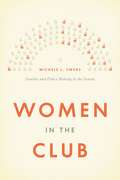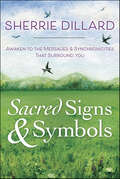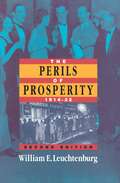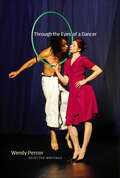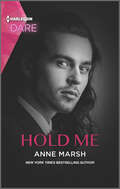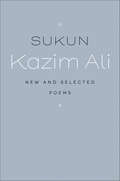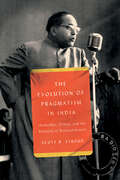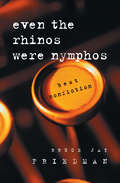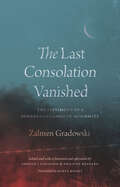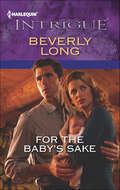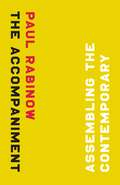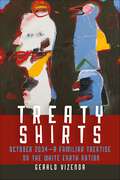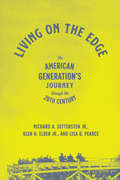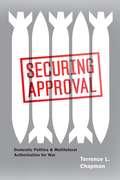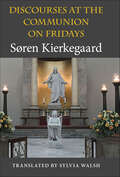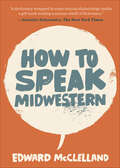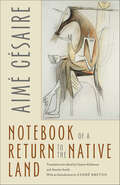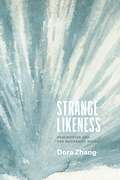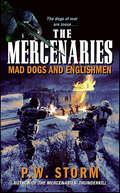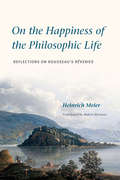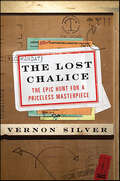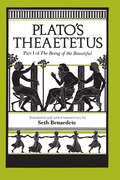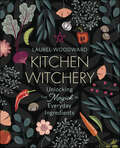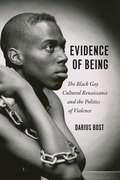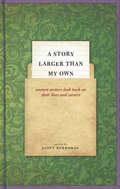- Table View
- List View
Women in the Club: Gender and Policy Making in the Senate
by Michele L. SwersIn the run-up to the 2012 presidential election, Democrats and Republicans were locked in a fierce battle for the female vote. Democrats charged Republicans with waging a “war on women,” while Republicans countered that Democratic policies actually undermined women’s rights. The women of the Senate wielded particular power, planning press conferences, appearing on political programs, and taking to the Senate floor over gender-related issues such as workplace equality and reproductive rights.The first book to examine the impact of gender differences in the Senate, Women in the Club is an eye-opening exploration of how women are influencing policy and politics in this erstwhile male bastion of power. Gender, Michele L. Swers shows, is a fundamental factor for women in the Senate, interacting with both party affiliation and individual ideology to shape priorities on policy. Women, for example, are more active proponents of social welfare and women’s rights. But the effects of gender extend beyond mere policy preferences. Senators also develop their priorities with an eye to managing voter expectations about their expertise and advancing their party’s position on a given issue. The election of women in increasing numbers has also coincided with the evolution of the Senate as a highly partisan institution. The stark differences between the parties on issues pertaining to gender have meant that Democratic and Republican senators often assume very different roles as they reconcile their policy views on gender issues with the desire to act as members of partisan teams championing or defending their party’s record in an effort to reach various groups of voters.
Sacred Signs & Symbols: Awaken to the Messages & Synchronicities That Surround You
by Sherrie Dillard&“A wonderfully grounded and inspiring guide to connecting with the divine in your daily life . . . a true treasure for your spiritual journey.&” —Laurie Bonser, author of The Law of Attraction Meets Financial Stewardship Everyone receives sacred signs, messages, and synchronicities, but we don't always notice or know how to interpret them. With Sacred Signs & Symbols, you&’ll develop the ability to recognize, understand, and be guided by the signs all around you. Featuring a glossary of hundreds of signs and their meanings, this comprehensive guide helps you build a personal oracle system for invoking messages in your daily life. Explore a variety of methods for increasing your awareness, including exercises and divination techniques that you can personalize to your needs. You&’ll also discover ways to connect with loved ones in the spirit realm and expand your perception of the world. No matter where you are or what you&’re doing, a loving, wise, spiritual presence is offering you advice and comfort through divine messages.&“Sherrie Dillard has managed to translate the language of the Universe to everyone in such a simple yet powerful way, so that we can all understand it . . . [Sacred Signs & Symbols is] an amazing translation of the vibrational language of the Universe.&” —Nianell, multi-award-winning singer-songwriter and author of Knowing Who I Am
The Perils of Prosperity: 1914–32 (Chicago History Of American Civilization Ser.)
by William E. Leuchtenburg“An orthodox—and excellent interpretive history of the stirring years 1914–32” in the United States (New York Times).“This book gives us a rare opportunity to enjoy the matured interpretation of an American Historian who has returned to the story and seen how recent decades have added meaning and vividness to this epoch of our history.” —Daniel J. Boorstin, from the PrefaceBeginning with Woodrow Wilson and U.S. entry into World War I, The Perils of Prosperity traces the transformation of the United States from an agrarian, isolationist nation into a liberal, industrialized power involved entangled in foreign affairs in spite of itself. William E. Leuchtenburg shows how the events of this period reflect the conflict between rural and urban attitudes that reached its crisis in the presidential campaign of 1928 and was finally resolved in the aftermath of the economic collapse in 1929.Leuchtenburg’s lively yet balanced account of this hotly debated era in American history has been a standard text for many years. In this substantial revision, he gives greater weight to the roles of women and minorities in the great changes of the era and reevaluates the factors leading to US involvement in World War I, as well as adding new insights on literature, the arts, and technology in daily life. He also provides updated lists of important dates and sources for further reading.
Through the Eyes of a Dancer: Selected Writings
by Wendy PerronThrough the Eyes of a Dancer compiles the writings of noted dance critic and editor Wendy Perron. In pieces for The SoHo Weekly News, Village Voice, The New York Times, and Dance Magazine, Perron limns the larger aesthetic and theoretical shifts in the dance world since the 1960s. She surveys a wide range of styles and genres, from downtown experimental performance to ballets at the Metropolitan Opera House. In opinion pieces, interviews, reviews, brief memoirs, blog posts, and contemplations on the choreographic process, she gives readers an up-close, personalized look at dancing as an art form. Dancers, choreographers, teachers, college dance students—and anyone interested in the intersection between dance and journalism—will find Perron's probing and insightful writings inspiring. Through the Eyes of a Dancer is a nuanced microcosm of dance's recent globalization and modernization that also provides an opportunity for new dancers to look back on the traditions and styles that preceded their own.
Hold Me: A Sexy Billionaire Romance
by Anne MarshDive into New York Times and USA TODAY bestselling author Anne Marsh’s delicious story of a fiercely hot billionaire, a quirky little smart-mouth and a sexy little game that’ll get them in a whole lot of trouble…With ten jobs and six addresses in four years, Peony Harding might as well change her name to Ms. Anticommitment. But before she can initiate Peony 2.0 (the responsible, career-minded, settled-down version of herself), she meets Jax Valentine—at a sex party. Jax is over six feet of dark, brooding, dirty fun…with a 100 percent chance of trouble. Like a sexy little game of “pretend marriage” that ends with a wickedly real wedding night!Jax Valentine likes his life just fine as it is. But Peony, a gorgeous, quirky firefly on the verge of disappearing into the night, completely unravels him. He cannot resist her…so why would he scare her off by admitting he’s a billionaire?It’s a summer fling filled with ridiculously hot heart-pounding sex, laughter and tacos on the beach. But every fling has an end date. Which is exactly when Peony discovers who Jax Valentine really is: a billionaire, her new boss…and her very real husband.Take control. Feel the rush. Explore your fantasies—Harlequin DARE publishes sexy romances featuring powerful alpha males and bold, fearless heroines exploring their deepest fantasies.
Sukun: New and Selected Poems (Wesleyan Poetry Series)
by Kazim AliKazim Ali is a poet, novelist, and essayist whose work explores themes of identity, migration, and the intersections of cultural and spiritual traditions. His poetry is known for its lyrical and expressive language, as well as its exploration of themes such as love, loss, and the search for meaning in a rapidly changing world. "Sukun" means serenity or calm, and a sukun is also a form of punctuation in Arabic orthography that denotes a pause over a consonant. This Sukun draws a generous selection from Kazim's six previous full-length collections, and includes 35 new poems. It allows us to trace Ali's passions and concerns, and take the measure of his art: the close attention to the spiritual and the visceral, and the deep language play that is both musical and plain spoken.[sample poem]The Fifth PlanetCome, early summer in the mountains, and come, strawberry moon,and carry me softly in the silver canoe on wires to the summit, where in that way of late night useless talk, the bright dark asks me, "What is the thing you are most afraid of?" and I already know which lie I will tell.There were six of us huddled there in the cold, leaning on the rockslingering in the dark where I do not like to linger, looking up at thesharp round pinnacle of light discussing what shapes we saw—rabbit,man, goddess—but that brightness for me was haunted by no thing,no shadow at all in the lumens.What am I, what am I, I kept throwing out to the hustling silence.No light comes from the moon, he's just got good positioning and I suppose that's the answer, that's what I'm most afraid of,that I'm a mirror, that I have no light of my own, that I hang in empty spacein faithful orbit around a god or fatherneither of Whom will ever see me whole. I keep squinting to try to see Jupiterwhich the newspaper said would be found near the moon but it's nowhere, they must have lied. Or like god, there is too muchreflection, headsplitting and profane, scraping up every shadow,too much light for anyone to see.
The Evolution of Pragmatism in India: Ambedkar, Dewey, and the Rhetoric of Reconstruction
by Scott R. StroudThe story of how the Indian reformer Bhimrao Ambedkar reimagined John Dewey’s pragmatism. In The Evolution of Pragmatism in India, Scott R. Stroud delivers a comprehensive exploration of the influence of John Dewey’s pragmatism on Bhimrao Ambedkar, architect of the Republic of India’s constitution. Stroud traces Ambedkar’s development in Dewey’s Columbia University classes in 1913–1916 through his final years in 1950s India when he rewrote the story of Buddhism. Stroud examines pragmatism’s influence not only on the philosophical ideas underpinning Ambedkar’s fight against caste oppression but also how his persuasive techniques drew on pragmatism’s commitment to reconstruction and meliorism. At the same time, Stroud is careful to point out the ways that Ambedkar pushed back against Dewey’s paradigm and developed his own approach to challenges in India. The result is a nuanced study of one of the most important figures in Indian history.
Even the Rhinos Were Nymphos: Best Nonfiction
by Bruce Jay FriedmanA few years ago, Christopher Buckley wrote of Bruce Jay Friedman in the New York Times Book Review that he "has been likened to everyone from J. D. Salinger to Woody Allen," but that "he is: Bruce Jay Friedman, sui generis, and no mean thing. No further comparisons are necessary." We are happy to report that he remains the same Bruce Jay Friedman in his unique, unblinking, and slightly tilted essays—collected here for the first time—in Even the Rhinos Were Nymphos. A butler school in Houston, a livestock auction in Little Rock, a home for "frozen guys" in California, JFK's humidor in Manhattan—all are jumping off points for Friedman's baleful and sharply satirical scrutiny of American life and behavior in the second half of the twentieth century. Travel with Friedman from Harlem to Hollywood, from Port-au-Prince to Etta's Eat Shop in Chicago. In these pieces, which were published in literary and mass-circulation magazines from the 1960s to the 1990s, you'll meet such luminaries as Castro and Clinton, Natalie Wood and Clint Eastwood, and even Friedman's friends Irwin Shaw, Nelson Algren, and Mario Puzo. Friedman is a master of the essay, whether the subject is crime reporting ("Lessons of the Street"), Hollywood shenanigans ("My Life among the Stars"), or his outrageous adventures as the editor of pulp magazines (the classic "Even the Rhinos Were Nymphos"). We could sing his praises as a journalist, humorist, and social critic. But, as Buckley tells us, being Bruce Jay Friedman is enough. Bruce Jay Friedman is the author of seven novels (including The Dick, Stern, and A Mother's Kisses), four collections of short stories, four full-length plays (including Scuba Duba and Steambath), and the screenplays for the movies Splash and Stir Crazy.
The Last Consolation Vanished: The Testimony of a Sonderkommando in Auschwitz
by Zalmen GradowskiA first-person Holocaust account by a prisoner killed in Auschwitz: “An act of witness that rises now and then to Biblical heights of eloquence.” —J. M. Coetzee, Nobel Prize–winning authorFilling a gap in history, The Last Consolation Vanished is the first complete English translation and critical edition of one prisoner’s powerful account of life and death in Auschwitz, written in Yiddish and buried in the ashes near Crematorium III. Zalmen Gradowski was in the Sonderkommando (special squad) at Auschwitz, a Jewish prisoner given the unthinkable task of ushering Jewish deportees into the gas chambers, removing their bodies, salvaging any valuables, transporting their corpses to the crematoria, and destroying all evidence of their murders. Despite their impossible situation, many Sonderkommandos chose to resist in two interlaced ways: planning an uprising and testifying. Gradowski did both, by helping to lead a rebellion on October 7, 1944, and by documenting his experiences. Within 120 scrawled notebook pages, his accounts describe the process of the Holocaust, the relentless brutality of the Nazi regime, the assassination of Czech Jews, the relationships among the community of men forced to assist in this nightmare, and the unbearable separation and death of entire families, including his own. Amid daily unimaginable atrocities, he somehow wrote pages that were literary, sometimes even lyrical—hidden where and when one would least expect to find them. The October 7th rebellion was completely crushed and Gradowski was killed in the process, but his testimony lives on. His extraordinary and moving account, accompanied by a foreword and afterword by Philippe Mesnard and Arnold I. Davidson, is a voice speaking to us from the past on behalf of millions who were silenced. Their story must be shared.
For the Baby's Sake
by Beverly LongA baby changes everything...Detective Sawyer Montgomery never makes the same mistake twice. Burned in the past, he's learned to stay guarded when a beautiful woman is involved. Problem is, getting the key testimony to close a case requires a hands-on approach, because strong-willed counselor Liz Mayfield-not to mention the desire between them-is quickly getting under his skin.Now that his witness, Liz's client, has suspiciously vanished, joining forces and taking to the road in order to save the pregnant teen's life is their only option. But it soon becomes clear that the danger targeting Liz places her in need of protection. Sawyer's protection. And that this unexpected complication will test every fiber of Sawyer's legendary self-control...
The Accompaniment: Assembling the Contemporary
by Paul RabinowIn this culmination of his search for anthropological concepts and practices appropriate to the twenty-first century, Paul Rabinow contends that to make sense of the contemporary anthropologists must invent new forms of inquiry. He begins with an extended rumination on what he gained from two of his formative mentors: Michel Foucault and Clifford Geertz. Reflecting on their lives as teachers and thinkers, as well as human beings, he poses questions about their critical limitations, unfulfilled hopes, and the lessons he learned from and with them. This spirit of collaboration animates The Accompaniment, as Rabinow assesses the last ten years of his career, largely spent engaging in a series of intensive experiments in collaborative research and often focused on cutting-edge work in synthetic biology. He candidly details the successes and failures of shifting his teaching practice away from individual projects, placing greater emphasis on participation over observation in research, and designing and using websites as a venue for collaboration. Analyzing these endeavors alongside his efforts to apply an anthropological lens to the natural sciences, Rabinow lays the foundation for an ethically grounded anthropology ready and able to face the challenges of our contemporary world.
Treaty Shirts: October 2034—A Familiar Treatise on the White Earth Nation
by Gerald VizenorGerald Vizenor creates masterful, truthful, surreal, and satirical fiction similar to the speculative fiction of Margaret Atwood and Neil Gaiman. In this imagined future, seven natives are exiled from federal sectors that have replaced federal reservations; they pursue the liberty of an egalitarian government on an island in Lake of the Woods. These seven narrators, known only by native nicknames, are related to characters in Vizenor's other novels and stories. Vizenor was the principal writer of the Constitution of the White Earth Nation, and this novel is a rich and critical commentary on the abrogation of the treaty that established the White Earth Reservation in 1867, and a vivid visualization of the futuristic continuation of the Constitution of the White Earth Nation, in 2034.
Living on the Edge: An American Generation’s Journey through the 20th Century
by Richard A. Settersten Jr. Glen H. Elder Lisa D. PearceHistory carves its imprint on human lives for generations after. When we think of the radical changes that transformed America during the twentieth century, our minds most often snap to the fifties and sixties: the Civil Rights Movement, changing gender roles, and new economic opportunities all point to a decisive turning point. But these were not the only changes that shaped our world, and in Living on the Edge, we learn that rapid social change and uncertainty also defined the lives of Americans born at the turn of the twentieth century. The changes they cultivated and witnessed affect our world as we understand it today. Drawing from the iconic longitudinal Berkeley Guidance Study, Living on the Edge reveals the hopes, struggles, and daily lives of the 1900 generation. Most surprising is how relevant and relatable the lives and experiences of this generation are today, despite the gap of a century. From the reorganization of marriage and family roles and relationships to strategies for adapting to a dramatically changing economy, the challenges faced by this earlier generation echo our own time. Living on the Edge offers an intimate glimpse into not just the history of our country, but the feelings, dreams, and fears of a generation remarkably kindred to the present day.
Securing Approval: Domestic Politics & Multilateral Authorization for War (Chicago Series On International And Dome Ser.)
by Terrence L. ChapmanAmong the most momentous decisions that leaders of a state are called upon to make is whether or not to initiate warfare. How their military will fare against the opponent may be the first consideration, but not far behind are concerns about domestic political response and the reaction of the international community. Securing Approval makes clear the relationship between these two seemingly distinct concerns, demonstrating how multilateral security organizations like the UN influence foreign policy through public opinion without ever exercising direct enforcement power. While UN approval of a proposed action often bolsters public support, its refusal of endorsement may conversely send a strong signal to domestic audiences that the action will be exceedingly costly or overly aggressive. With a cogent theoretical and empirical argument, Terrence L. Chapman provides new evidence for how multilateral organizations matter in security affairs as well as a new way of thinking about the design and function of these institutions.
Discourses at the Communion on Fridays (Philosophy of Religion)
by Søren KierkegaardSøren Kierkegaard's 13 communion discourses constitute a distinct genre among the various forms of religious writing composed by Kierkegaard. Originally published at different times and places, Kierkegaard himself believed that these discourses served as a unifying element in his work and were crucial for understanding his religious thought and philosophy as a whole. Written in an intensely personal liturgical context, the communion discourses prepare the reader for participation in this rite by emphasizing the appropriate posture for forgiveness of sins and confession.
How to Speak Midwestern
by Edward McClelland&“A long-overdue study of the middle-American vernacular, and how that vernacular informs our identity . . . A regionally specific Urban Dictionary.&” —Inside Hook The Pittsburgh toilet. Squeaky cheese. City chicken. Shampoo Banana. Chevy in the Hole. These are all phrases that are familiar to Midwesterners, but foreign to anyone living outside the region. Find out what they mean in How to Speak Midwestern. Edward McClelland will not only explain what Midwesterners say, but how and why they say it. He examines the causes of the Northern Cities Vowel Shift, one of the most significant changes in English pronunciation in a thousand years; explains why the accents in Fargo miss the nasality that&’s a hallmark of Minnesota speech; and reveals why Chicagoans talk more like people from Buffalo than their next-door neighbors in Wisconsin. For outsiders, McClelland will include helpful information such as &“How to Talk Through Your Nose,&” &“How to Mispronounce Foreign Place Names,&” and &“&‘Well, That&’s Different&’: How to Passive-Aggressively Criticize People, Places and Things.&” If you&’re from the Midwest, you&’ll have a better understanding of why you talk the way you do. If you&’re not, well, you&’ll know exactly what to say the next time someone ends a sentence with &“eh?&” &“How to Speak Midwestern is a fascinating read, whether you hail from WOWOland, the UP, Cereal City, or Baja Minnesota.&” —Chicagoist &“A dictionary wrapped in some serious dialectology inside a gift book trailing a serious whiff of Relevance.&” —The New York Times
Notebook of a Return to the Native Land (Wesleyan Poetry Series)
by Aimé CésaireAimé Césaire's masterpiece, Notebook of a Return to the Native Land, is a work of immense cultural significance and beauty. The long poem was the beginning of Césaire's quest for négritude, and it became an anthem of Blacks around the world. With its emphasis on unusual juxtapositions of object and metaphor, manipulation of language into puns and neologisms, and rhythm, Césaire considered his style a "beneficial madness" that could "break into the forbidden" and reach the powerful and overlooked aspects of black culture.Clayton Eshleman and Annette Smith achieve a laudable adaptation of Césaire's work to English by clarifying double meanings, stretching syntax, and finding equivalent English puns, all while remaining remarkably true to the French text. Their treatment of the poetry is marked with imagination, vigor, and accuracy that will clarify difficulties for those already familiar with French, and make the work accessible to those who are not. André Breton's introduction, A Great Black Poet, situates the text and provides a moving tribute to Césaire.Notebook of a Return to the Native Land is recommended for readers in comparative literature, post-colonial literature, African American studies, poetry, modernism, and French.
Strange Likeness: Description and the Modernist Novel (Thinking Literature)
by Dora ZhangThe modern novel, so the story goes, thinks poorly of mere description—what Virginia Woolf called “that ugly, that clumsy, that incongruous tool.” As a result, critics have largely neglected description as a feature of novelistic innovation during the twentieth century. Dora Zhang argues that descriptive practices were in fact a crucial site of attention and experimentation for a number of early modernist writers, centrally Woolf, Henry James, and Marcel Proust. Description is the novelistic technique charged with establishing a common world, but in the early twentieth century, there was little agreement about how a common world could be known and represented. Zhang argues that the protagonists in her study responded by shifting description away from visualizing objects to revealing relations—social, formal, and experiential—between disparate phenomena. In addition to shedding new light on some of the best-known works of modernism, Zhang opens up new ways of thinking about description more broadly. She moves us beyond the classic binary of narrate-or-describe and reinvigorates our thinking about the novel. Strange Likeness will enliven conversations around narrative theory, affect theory, philosophy and literature, and reading practices in the academy.
The Mercenaries: Mad Dogs and Englishmen
by P. W. StormMichael "Mad Dog" Hertzog lived for soldiering—but he wasn't willing to die following the orders of bureaucrats and incompetents. Now he and his private army of warriors-for-hire are doing war Dog's way.Hertzog's right hand man has vanished . . . along with $30 million of Mad Dog's money. The evidence says a trusted British merc has gone rogue, but there may be a different, more virulent form of treachery at work here. There are answers waiting aboard a train racing east from Moscow, carrying Russian gangsters, stolen Siberian diamonds, a shadow team of Iranian agents . . . and a pair of nuclear warheads. Suddenly the stakes have gotten perilously high for Mad Dog, his team, and the world . . . as time ticks rapidly away on a terrifying plot to bathe the Middle East in nuclear fire.
On the Happiness of the Philosophic Life: Reflections on Rousseau's Rêveries in Two Books
by Heinrich MeierOn the Happiness of the Philosophic Life presents Heinrich Meier’s confrontation with Rousseau’s Rêveries, the philosopher’s most beautiful and daring work, as well as his last and least understood. Bringing to bear more than thirty years of study of Rousseau, Meier unfolds his stunningly original interpretation in two parts. The first part of On the Happiness of the Philosophic Life approaches the Rêveries not as another autobiographical text in the tradition of the Confessions and the Dialogues, but as a reflection on the philosophic life and the distinctive happiness it provides. The second turns to a detailed analysis of a work referred to in the Rêveries, the “Profession of Faith of the Savoyard Vicar,” which triggered Rousseau’s political persecution when it was originally published as part of Émile. In his examination of this most controversial of Rousseau’s writings, which aims to lay the foundations for a successful nonphilosophic life, Meier brings to light the differences between natural religion as expressed by the Vicar and Rousseau’s natural theology. Together, the two reciprocally illuminating parts of this study provide an indispensable guide to Rousseau and to the understanding of the nature of the philosophic life. “[A] dense but precise and enthralling analysis.”—New Yorker
The Lost Chalice: The Real-Life Chase for One of the World's Rarest Masterpieces—a Priceless 2,500-Year-Old Artifact Depicting the Fall of Troy
by Vernon Silver“A riveting story of tomb robbers and antiquities smugglers, high-stakes auctioneers and the princely chiefs of the world’s most prestigious museums….A terrific read, from start to finish.”—James L. Swanson, New York Times bestselling author of ManhuntAn Oxford-trained archaeologist and award-winning journalist based in Rome, Vernon Silver brings us The Lost Chalice, the electrifying true story of the race to secure a priceless, 2,500-year-old cup depicting the fall of Troy—a lost treasure crafted by Euphronios, an artist widely considered “the Leonardo Da Vinci of ancient Greece.” A gripping, real life mystery, The Lost Chalice gives readers a behind-the-scenes look at the inner workings of great museums and antiquities collections—exposing a world of greed, backstabbing, and double-dealing.
Plato's Theaetetus: Part I of The Being of the Beautiful
by PlatoTheaetetus, the Sophist, and the Statesman are a trilogy of Platonic dialogues that show Socrates formulating his conception of philosophy as he prepares the defense for his trial. Originally published together as The Being of the Beautiful, these translations can be read separately or as a trilogy. Each includes an introduction, extensive notes, and comprehensive commentary that examines the trilogy's motifs and relationships. "Seth Benardete is one of the very few contemporary classicists who combine the highest philological competence with a subtlety and taste that approximate that of the ancients. At the same time, he as set himself the entirely modern hermeneutical task of uncovering what the ancients preferred to keep veiled, of making explicit what they indicated, and hence...of showing the naked ugliness of artificial beauty."—Stanley Rose, Graduate Faculty Philosophy Journal Seth Benardete (1930-2001) was professor of classics at New York University. He was the author or translator of many books, most recently The Argument of the Action, Plato's "Laws," and Plato's "Symposium," all published by the University of Chicago Press.
Kitchen Witchery: Unlocking the Magick in Everyday Ingredients
by Laurel WoodwardTransform your cooking into a magickal act of healing, manifesting, and creating.“A fabulous mix of practical knowledge and magickal application that invites you to step into your kitchen with mindfulness and purpose. Sometimes a wooden spoon can be as powerful as a wand.” —Deborah Blake, author of Everyday WitchcraftFeaturing a wide variety of recipes, correspondences, and techniques, this practical guide elevates the way you cook and prepare meals. Laurel Woodward shares the magick of everyday things, revealing how each task can become a ritual of creation. Organized by food type, this book teaches the magickal ins and outs of:• Wheats and Flours• Beans and Lentils• Nuts and Seeds Oils and Vinegars• Sweets• Spices and Herbs• Vegetables• Fruits Dairy and Eggs• Drinks• Gluten-Free MealsKitchen Witchery also provides recipes for the seasons and holidays, oil and seasoning blends, and clever ways to turn your pantry items into magickal tools. From homemade hummus to herbal teas and so much more, this book nourishes your practice and shows you the bountiful magick right in your kitchen.“Laurel has here delved into the subtle enchantment of those things we all encounter daily, the food we eat, leading us to see food as not just energy, but a path.” —Cliff Seruntine, permaculturist, shaman, and author of The Wildwood Way and Seasons of the Sacred Earth
Evidence of Being: The Black Gay Cultural Renaissance and the Politics of Violence
by Darius BostEvidence of Being opens on a grim scene: Washington DC’s gay black community in the 1980s, ravaged by AIDS, the crack epidemic, and a series of unsolved murders, seemingly abandoned by the government and mainstream culture. Yet in this darkest of moments, a new vision of community and hope managed to emerge. Darius Bost’s account of the media, poetry, and performance of this time and place reveals a stunning confluence of activism and the arts. In Washington and New York during the 1980s and ’90s, gay black men banded together, using creative expression as a tool to challenge the widespread views that marked them as unworthy of grief. They created art that enriched and reimagined their lives in the face of pain and neglect, while at the same time forging a path toward bold new modes of existence. At once a corrective to the predominantly white male accounts of the AIDS crisis and an openhearted depiction of the possibilities of black gay life, Evidence of Being above all insists on the primacy of community over loneliness, and hope over despair.
A Story Larger than My Own: Women Writers Look Back on Their Lives and Careers
by Janet BurrowayIn 1955, Maxine Kumin submitted a poem to the Saturday Evening Post. “Lines on a Half-Painted House” made it into the magazine—but not before Kumin was asked to produce, via her husband’s employer, verification that the poem was her original work. Kumin, who went on to win the Pulitzer Prize for poetry, was part of a groundbreaking generation of women writers who came of age during the midcentury feminist movement. By challenging the status quo and ultimately finding success for themselves, they paved the way for future generations of writers. In A Story Larger than My Own, Janet Burroway brings together Kumin, Julia Alvarez, Jane Smiley, Erica Jong, and fifteen other accomplished women of this generation to reflect on their writing lives. The essays and poems featured in this collection illustrate that even writers who achieve critical and commercial success experience a familiar pattern of highs and lows over the course of their careers. Along with success comes the pressure to sustain it, as well as a constant search for subject matter, all too frequent crises of confidence, the challenges of a changing publishing scene, and the difficulty of combining writing with the ordinary stuff of life—family, marriage, jobs. The contributors, all now over the age of sixty, also confront the effects of aging, with its paradoxical duality of new limitations and newfound freedom. Taken together, these stories offer advice from experience to writers at all stages of their careers and serve as a collective memoir of a truly remarkable generation of women.
